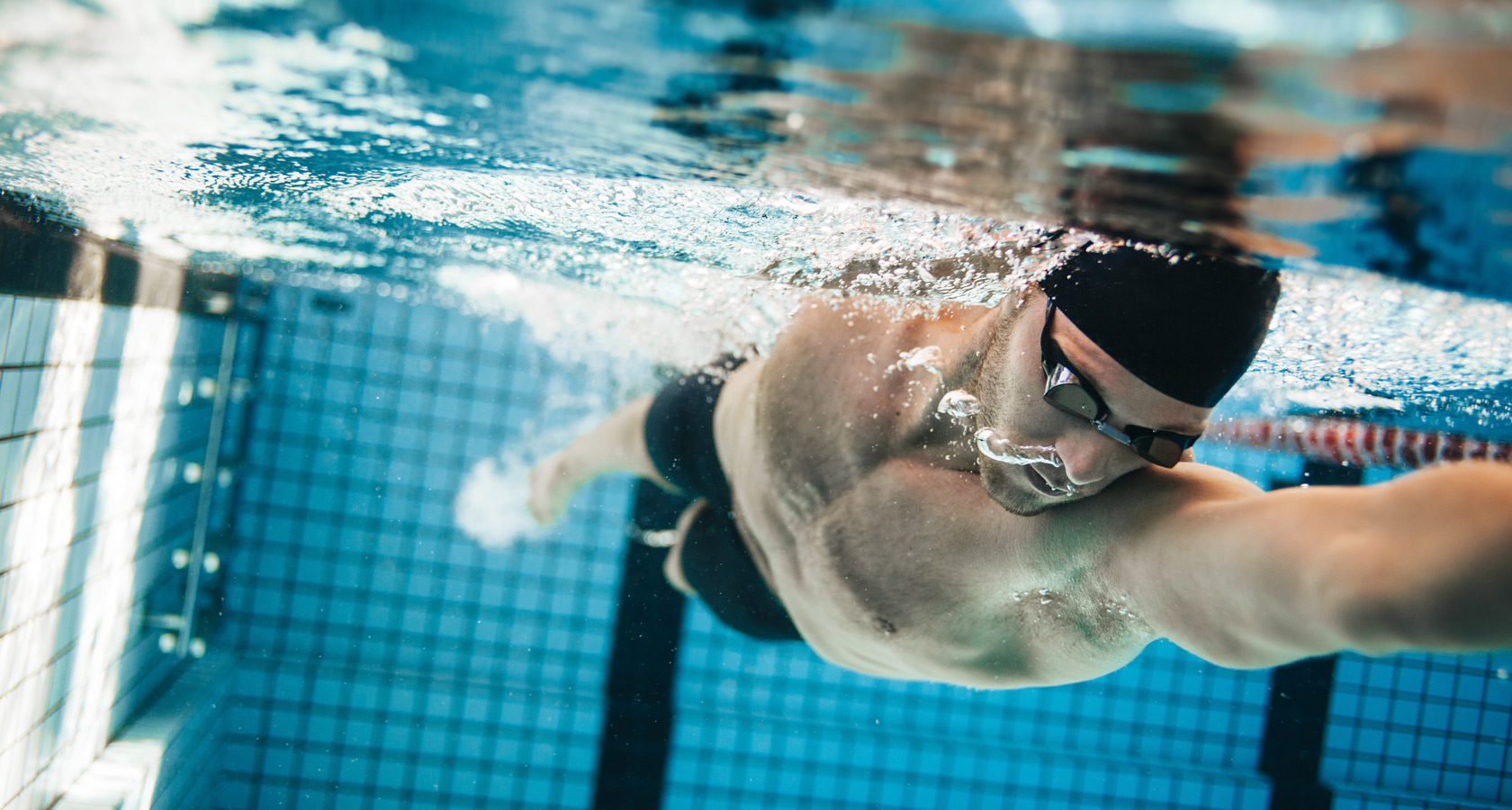Technique for the Intermediate Swimmer
One of the great challenges of the sport of triathlon is balancing experience, expertise and fitness across three individual sports, then combining them into a single, three-sport event. The swim can cause anxiety even for the seasoned triathlete. Keep working on your weaknesses, turn them into strengths to grow your fitness, competence and confidence.
Refine your freestyle technique. Even Olympians do drills. The swim is highly technique driven and it’s important to continue to work to improve in this area in order to get faster and stronger. The pull is your main propulsive force, but the kick is often neglected by triathletes in order to “save their legs” for the bike and run. Good logic, but if you don’t train your kick, you lose about 15-20 percent of your propulsion. The loss of efficiency and coordination between your kick, hips/core and pull will prevent further improvements. Once you’ve improved your kick, you can use it or not use it as needed. If you lack efficiency, endless yards in the pool will only get you so far.
Catch and pull. This is where you’ll gain the most in terms of speed and propulsion. Here’s a rundown of the highlights of an efficient pull:
- Fingertips enter the water in line with your ear/eyebrow, elbow slightly bent.
- Hip rotates down toward the bottom, giving you more length as you extend your arm in front of you.
- Maintain an internally rotated shoulder to get ready for the high elbow catch.
- With your arm fully extended begin to press down on the water with your lat muscles, fingertips aim toward the bottom as elbow pushes forward to “catch” the water. Think of reaching over a barrel.
- Elbow is about six inches under the water at this point.
- The press down on the water is brief and translates quickly to pushing the water back, palm facing the wall behind you.
- Finish with a brush of your hand past your thigh.
- Recovery is a relaxed rotation of your arm/shoulder in line with your hips to prepare for the next stroke.
Video analysis. This is one of the most powerful ways to be able to look at what you’re actually doing in the water (vs. what it “feels” like you’re doing in the water). Getting expert eyes on your stroke pays strong dividends. You can see in real time what’s working and what’s not working correctly in your stroke. Not all drills are appropriate for all swimmers. Learn individual technique pointers and drills specific to your needs to improve both efficiency and fitness.
Bilateral breathing. At the intermediate level, breathing effectively on both sides is an essential skill. Bilateral breathing means alternating breathing pattern from the left to right every third, fifth, seventh stroke. Bilateral breathing gives your stroke symmetry and balance and helps with navigation in open water. But, any pattern of breathing to both sides works as well. For example, alternate breathing to the right for a 25, then to the left for a 25. Or, breathe for five strokes on the right, then five strokes on the left. Strictly adhering to breathing every third stroke can leave you oxygen deprived. When swimming faster, breathe more frequently. When stretching it out and swimming easier, breathe less frequently.
Intermediate level gear. Some new gear to add to your list: fins, paddles, pull buoy and a snorkel. The fins help with leg propulsion, ankle flexibility and support doing drills; pull buoys aid leg flotation so you can focus on arm propulsion and efficiency; the snorkel helps improve lung power, breathing comfort and drill execution without having to turn your head to breathe. Paddles are fantastic for helping with pull strength and power, but only use them when your pull is relatively efficient. Otherwise, you will reinforce bad habits without knowing it.
Dives and flip turns. Learn to dive with goggles on. The critical skill to focus on is keeping your chin glued to your chest with arms reaching overhead. Flip turns are faster, but can take a while to learn; a great skill to start learning in the offseason. You’ll need to do several thousand to get the technique to become automatic. Flip turns help with breath control and continuous swimming needed for the open water.
Triathlon race prep workouts. Here are three main set sample workouts to work on triathlon specific skills:
- Breath control and lung power. 10x100 breathing every 3, 5, 7, 3 strokes by 25.
- Variable pacing. 6x200 as alternating 50 fast/50 steady aerobic.
- Prepare for a fast start. 3x300 as: 100 sprint/200 race pace. Followed by 400-800 pull with paddles and pull buoy.
Open water skills practice in pool. Get a jump on the challenges of swimming in open water by practicing some of your skills in the pool. Open water usually means dark water with sighting and navigation above the water. Sight breathing technique is one of those critical skills to practice in the pool: pop your eyes (only) forward and up to take a quick peek, turn your head to the side to inhale, head down to exhale. First get the basics of the technique, then pick smaller and smaller objects to sight on and swim toward in the pool. Getting in the open water as much as possible will help you overcome any anxieties and dial in your navigation and sighting. Make this part of your weekly swim training as conditions allow.


